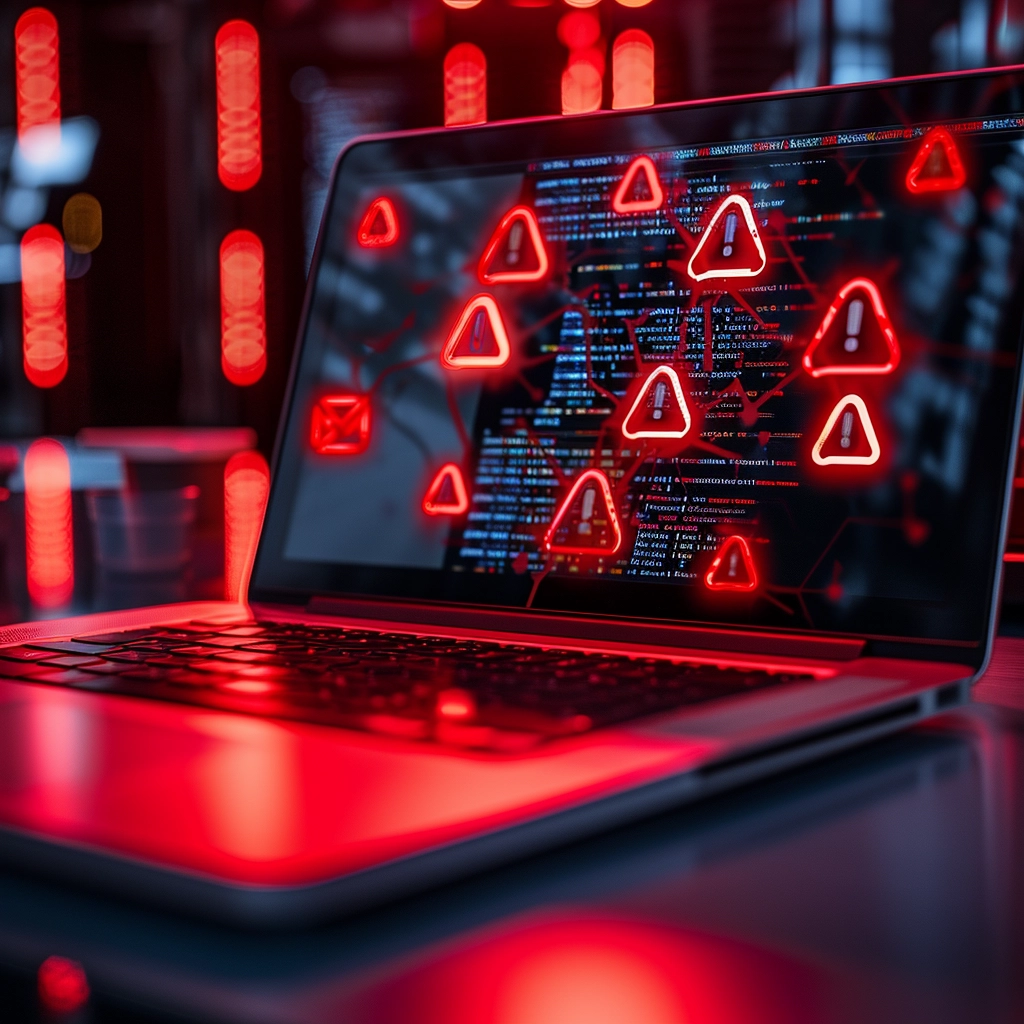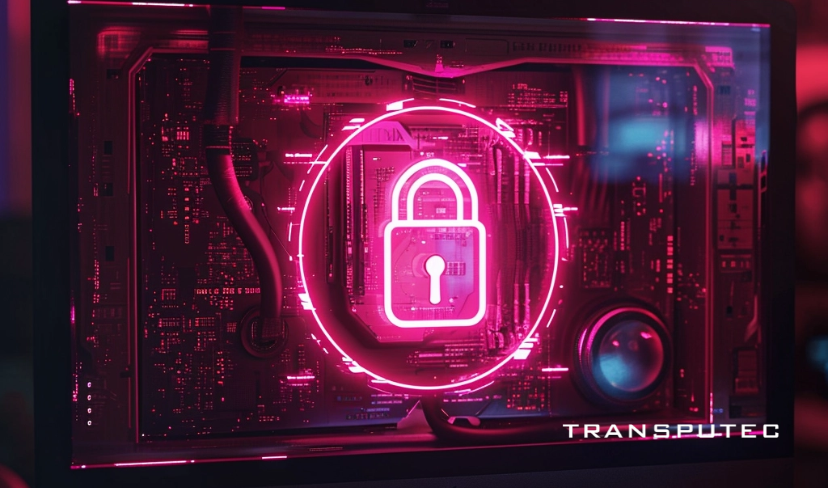In today’s digital landscape, the threat of ransomware attacks looms large, jeopardising not only sensitive data but also the very operations of businesses and individuals. However, with the right approach and tools, recovery from such attacks is possible.
Transputec’s cybersecurity experts play a crucial role in ransomware virus recovery services, offering expertise, support, and guidance to organisations grappling with the aftermath of ransomware attacks. Their comprehensive approach helps restore digital assets, safeguard data integrity, and fortify defences against future threats. This comprehensive guide delves into the intricacies of ransomware virus recovery services, offering actionable insights and expert advice to navigate these challenging times.
What is Ransomware?
Ransomware is a type of malicious software (malware) designed to block access to a computer system or files until a sum of money, or ransom, is paid. It works by encrypting the victim’s files or locking the entire system, rendering it inaccessible. Once the ransomware has taken hold, the attackers demand payment, usually in cryptocurrency, in exchange for providing the decryption key or unlocking the system. Ransomware attacks can have severe consequences, ranging from financial losses to data breaches and operational disruptions.
Removing a ransomware virus from a computer is not an easy process and requires the skills of qualified and experienced professionals. If your computer or laptop has been infected with ransomware and your data has been encrypted, Transputec can help restore your data.

Types of Ransomware
Ransomware comes in various forms, each with its unique characteristics and methods of infiltration. Here are some common types:
| Encrypting Ransomware | Locker Ransomware | Scareware Ransomware |
| This type of ransomware encrypts files on the victim’s system, making them inaccessible until a ransom is paid. Examples include WannaCry and CryptoLocker. | Locker ransomware locks the victim out of their entire system, preventing access to files, applications, and sometimes even the operating system itself. Petya and NotPetya are notable examples. | Scareware doesn’t encrypt or lock files; instead, it tricks users into believing their system is infected with malware, prompting them to pay for fake antivirus software or services. |
| Mobile Ransomware | Ransomware as a Service | Doxware (Leakware) |
| Targeting mobile devices, this type of ransomware infects smartphones and tablets, often by masquerading as legitimate apps or through malicious links and attachments. | Ransomware as a Service (RaaS) allows even individuals with limited technical expertise to launch ransomware attacks. Criminals can rent or purchase ransomware kits, enabling them to distribute the malware and collect ransom payments, with the service provider cutting the profits. | Unlike traditional ransomware, Doxware threatens to release sensitive information or files unless the ransom is paid. This tactic is particularly concerning for individuals and organisations with confidential data. |
How does a Ransomware Attack?
Ransomware attacks infiltrate systems via malicious email attachments, compromised websites, or vulnerable software. The ransomware then encrypts valuable data and displays a ransom note for payment in exchange for the decryption key. Paying the ransom doesn’t guarantee file recovery or system access. Robust cybersecurity measures are necessary to prevent and mitigate the impact of ransomware attacks.
How to Identify Ransomware Attacks?
To identify a ransomware attack, watch out for sudden file encryption, unusual file extensions or name changes, the inability to access certain files, system slowdowns, and alarming messages or warnings. Suspicious processes running in the background may also indicate an attack. To prevent ransomware attacks, update your antivirus software, be cautious with email attachments and links, and keep your software up-to-date. If you suspect an attack, immediately disconnect affected systems from the network and seek assistance from cybersecurity professionals for prompt remediation.
How to Stay Away from Ransomware Attacks?
Staying protected from ransomware attacks requires a proactive approach to cybersecurity. Here are some essential steps to reduce the risk of falling victim to ransomware:
| Keep Software Updated | Regularly update operating systems, applications, and antivirus software to patch known vulnerabilities that ransomware may exploit. |
| Educate Yourself and Others | Educate yourself and your employees or family members about the dangers of ransomware and how to recognise suspicious emails, links, and attachments. Training sessions on cybersecurity best practices can go a long way in preventing attacks. |
| Use Strong Passwords | Implement strong, unique passwords for all accounts and enable multi-factor authentication wherever possible to add an extra layer of security. |
| Backup Regularly | Regularly backup important data to an external storage device or a cloud-based service. Ensure backups are stored offline and are inaccessible from the network to prevent them from being encrypted in a ransomware attack. |
| Exercise Caution Online | Be cautious when clicking on links or downloading attachments from unfamiliar or suspicious sources, especially in emails from unknown senders. |
| Deploy Security Software | Invest in reputable antivirus and antimalware software that offers real-time protection against ransomware and other threats. Enable firewalls and intrusion detection systems to further enhance security. |
| Limit User Privileges: | Regularly monitor network traffic for unusual or suspicious behaviour that may indicate a ransomware attack in progress. Intrusion detection systems can help detect and respond to threats quickly. |
| Implement Email Filtering | Use email filtering and spam detection mechanisms to block malicious emails before they reach users’ inboxes. This can prevent phishing attempts and the distribution of ransomware-laden attachments. |
| Monitor Network Activity | Regularly monitor network traffic for unusual or suspicious behavior that may indicate a ransomware attack in progress. Intrusion detection systems can help detect and respond to threats quickly. |
| Have a Response Plan | Develop and regularly update a comprehensive incident response plan that outlines the steps to take in the event of a ransomware attack. This should include procedures for isolating infected systems, notifying authorities, and restoring data from backups. |
How Transputec Cybersecurity Experts Help in Ransomware Virus Recovery Services
Transputec cybersecurity experts offer invaluable assistance in navigating the complexities of ransomware virus recovery services. Here’s how they can help:
Expert Assessment: Transputec cybersecurity experts conduct a comprehensive assessment of the ransomware attack’s impact on your systems and data. They analyse the encryption methods used, identify compromised files, and evaluate the overall severity of the attack.
Data Recovery: Leveraging advanced techniques and tools, Transputec experts work diligently to recover encrypted data and restore it to its original state. They employ decryption methods where possible and ensure that recovered data is clean and free from malware.
System Restoration: Transputec professionals assist in restoring affected systems to their pre-attack state, ensuring that critical infrastructure and operations are up and running smoothly. They deploy security patches, updates, and enhancements to bolster defences against future attacks.
Incident Response: Transputec cybersecurity experts provide guidance and support throughout the incident response process, helping organisations navigate legal, regulatory, and compliance requirements. They liaise with law enforcement agencies and regulatory bodies as necessary and assist in incident documentation and reporting.
Prevention Strategies: Beyond recovery, Transputec experts work with organisations to implement proactive cybersecurity measures to prevent future ransomware attacks. They advise on security best practices, conduct security assessments, and deploy robust defences to mitigate the risk of recurrence.
Conclusion:
While ransomware attacks continue to pose a formidable challenge, proactive preparation and swift action can mitigate their impact. By prioritising cybersecurity measures and investing in robust recovery strategies, individuals and organisations can safeguard their digital assets and emerge stronger from adversity.
Transputec is one of the best providers of ransomware virus recovery services. We offer a ransomware virus recovery service that covers a wide range of ransomware. However, the most crucial thing is protecting and keeping your data secure. We specialise in recovering your computer or mobile device from ransomware viruses.
As a prominent data recovery firm, we specialise in helping with encrypted data recovery and ransomware virus recovery. If you have any inquiries regarding “How to Recover Files From Ransomware,” feel free to contact our team of expert ransomware virus recovery specialists.

Are you interested in partnering with us?
FAQS
What is the process for a Ransomware Virus Recovery Service?
The process for Ransomware Virus Recovery Service typically involves assessing the extent of the damage, isolating infected systems, restoring data from backups, employing decryption techniques, and implementing security enhancements to prevent future attacks.
Can I recover my files without paying the ransom in the Ransomware Virus Recovery Service?
Yes, in many cases, it is possible to recover files without paying the ransom in Ransomware Virus Recovery Service. Professional data recovery experts utilise advanced decryption tools and techniques to restore encrypted data without succumbing to ransom demands.
How long does a Ransomware Virus Recovery Service take?
The duration of Ransomware Virus Recovery Service varies depending on factors such as the severity of the attack, the complexity of the encryption, the availability of backups, and the expertise of the recovery team. In some cases, recovery can be completed within a few hours, while more complex cases may take several days or weeks.
What measures can I take to prevent future ransomware attacks after utilising the Ransomware Virus Recovery Service?
To prevent future ransomware attacks after utilising the Ransomware Virus Recovery Service, it is essential to implement robust cybersecurity measures such as regular software updates, employee training on phishing awareness, deploying endpoint security solutions, and maintaining up-to-date backups.
How can I choose the right Ransomware Virus Recovery Service provider?
When selecting a Ransomware Virus Recovery Service provider, consider factors such as their expertise and experience in handling ransomware attacks, their success rate in recovering encrypted data, the comprehensiveness of their recovery solutions, and their commitment to confidentiality and data security. It’s also advisable to seek recommendations from trusted sources and read reviews from past clients.






